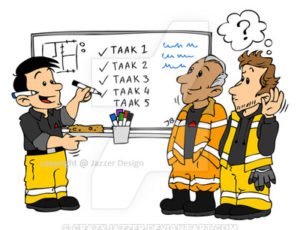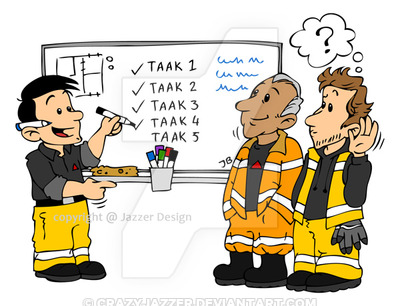As said by Cyril Northcote Parkinson, “The basic secret of the art of managing is delegation.” Is delegating really a secret? Not really. The principles of the delegation are simple.
However, many entrepreneurs and executives still find it difficult to apply delegation at work. The secret, therefore, seems to lie more in how to successfully implement the principles of proper delegation in practice.
However, knowing the principles is not enough. Whoever delegates a task must consider whom to delegate, how much decision-making space is left, and how much he needs to support and control. Avoiding micromanagement is important. To be able to assess this fundamental, it is useful to deal with the five stages of task delegation.
Before we start discussing the five stages of task delegation, let’s discuss some other important considerations for task delegation.
Why delegate frequently does not work?
As an entrepreneur and a leader, you have to decide each day: what is not important and what is urgent? Which of your tasks should you delegate and which you should not?

A leader must concentrate on the essentials. However, whoever wants to focus on the essential must be able to let go as well, which means many hassles. Many managers and especially many small businesses know very well what tasks they should actually delegate and what they should not.
Excuses do not help you
Some of the excuses or justification statements are somewhat like; “I have to do it myself, that does not matter anyway! ”
or
“No one but me really knows how that goes! So, I did it myself. ”
or
“I do not have anyone I can trust and give it to.”
These excuses do not help you any further. You may not have the right staff at the moment, or you may think you can do it the best. However, if you do not change that now, it will remain so in the future.
Once you start delegating some of your tasks, you will find it kind of interesting. Some of your employees will do it differently from you; they will make mistakes, which you would think never have had happened to you. However, after some time, everything will be crystallised that the results of your employee’s productivity will not just become as good as you but even significantly better than you. This will not only be fascinating, but this experience will make it much easier for you to delegate tasks.
To start with the delegation is an investment in the training of the employees – it costs time and energy. However, it is worth it.
Develop your employees
Give your employees the opportunity to learn from mistakes. If you delegate a task that you have done so far, you will probably get a worse result the first time. However, this is only understandable. After all, you have been able to learn how to do it for months or years.
Of course, you cannot pass a difficult task directly to anyone. You cannot simply trust that your employees will learn this over time. This is not how it works.
If you want to delegate a task to an employee, you must first assess what experience, what level of knowledge, and what abilities it has for this task. Based on this, you must make more or fewer guidelines, control or support.
The five stages of the delegation
How far do you have to control? How much do you have to pretend? To answer these questions, it is a clever idea to deal with the five stages of the delegation:
The first stage of the delegation is called “Set around”. Here you can specify everything as you want it to be. You tell your employees that they should follow your specifications. As you have already researched, weighed and decided everything for them.
At the next level, the second stage of the delegation, your employee already has more degrees of freedom. You tell him to get involved in the subject in general, to work out options, and then to consult with you. You can call this second stage as “Working for You”.
In the third stage, your employees will be introduced to a topic in detail, develop alternatives and develop a detailed proposal. They will then explain you in detail how they intend to continue the project. You then decide whether to do so or not. This third stage of the delegation is called “Prepare Proposal”.
In step four, the employee makes the decision, but tells you later, what and why they decided to pursue certain decisions. The stage is called “Decide with feedback”.
The top level of the delegation is the one in which the employees make decisions that they consider to be the best and you have so much confidence in them that they do not have to give you any feedback. This is the fifth level: “Decisions without feedback”.
Tips to decide how to delegate a task
Good bosses are just those who trust their people, assign tasks to them and let them work independently because that is good for their motivation. Here are some great tips on how executives succeed in giving tasks – and finally have more time for the essentials.
#1 Ask questions
There are no decisions that only the boss can meet, says coach Gunar Michael. “The boss has a task: to ask the right decision-making questions.” By inquiring questions, the boss has to make sure; the employees make the right decision themselves.
#2 Adjust structures
If the company grows, leadership must change. Founders usually do everything themselves. However, you need to remember with the first employees, comes the first management tasks. Even if you have five employees, you need a colleague who takes decisions. From about 15 to 20 employees there should be teams, who work independently and decide, without consistently involving the boss.
#3 Pick up your employees
If you have not worked independently for many years, the fear has to be taken. The boss has to decide how much he can trust each in the team. For the beginning, small projects are recommended, which are managed by employees on their own. That goes with every company size, and it can be anything from a company trip, a Christmas party to the staff holiday planning.
#4 Do not overdo
The change to independent working takes time. For example, if a hundred-page report needs to be written for a customer. The highest level of the delegation is when the employee writes the report and sends it to the client directly. The boss has nothing to do with it.
The pre-stage would be to schedule a time buffer so that the entrepreneur has time to read the report before it goes to the customer. As mentioned above, start with simpler and small projects.
#5 Failure to tolerate
The boss has to endure that employees sometimes make mistakes. “I have to give an employee the opportunity to make mistakes so he can learn,” says Bernd Geropp. Be a new employee; you already know beforehand that the person is likely to make mistakes. “So, I delegate in smaller steps with more frequent controls so that I can catch the errors,” explains Geropp.
It is crucial to react correctly to mistakes, however, be patient with them even if they ask you the same question hundred times. Remember, Rome was not built in a day. Do not worry, do not be angry, do not feel irritated, but ask: “What did you learn, what do you do differently next time?”
Bosses who can delegate have more time for the essentials – and more satisfied employees. Use the tips and follow the five stages to delegate tasks successfully.

Leave a Reply